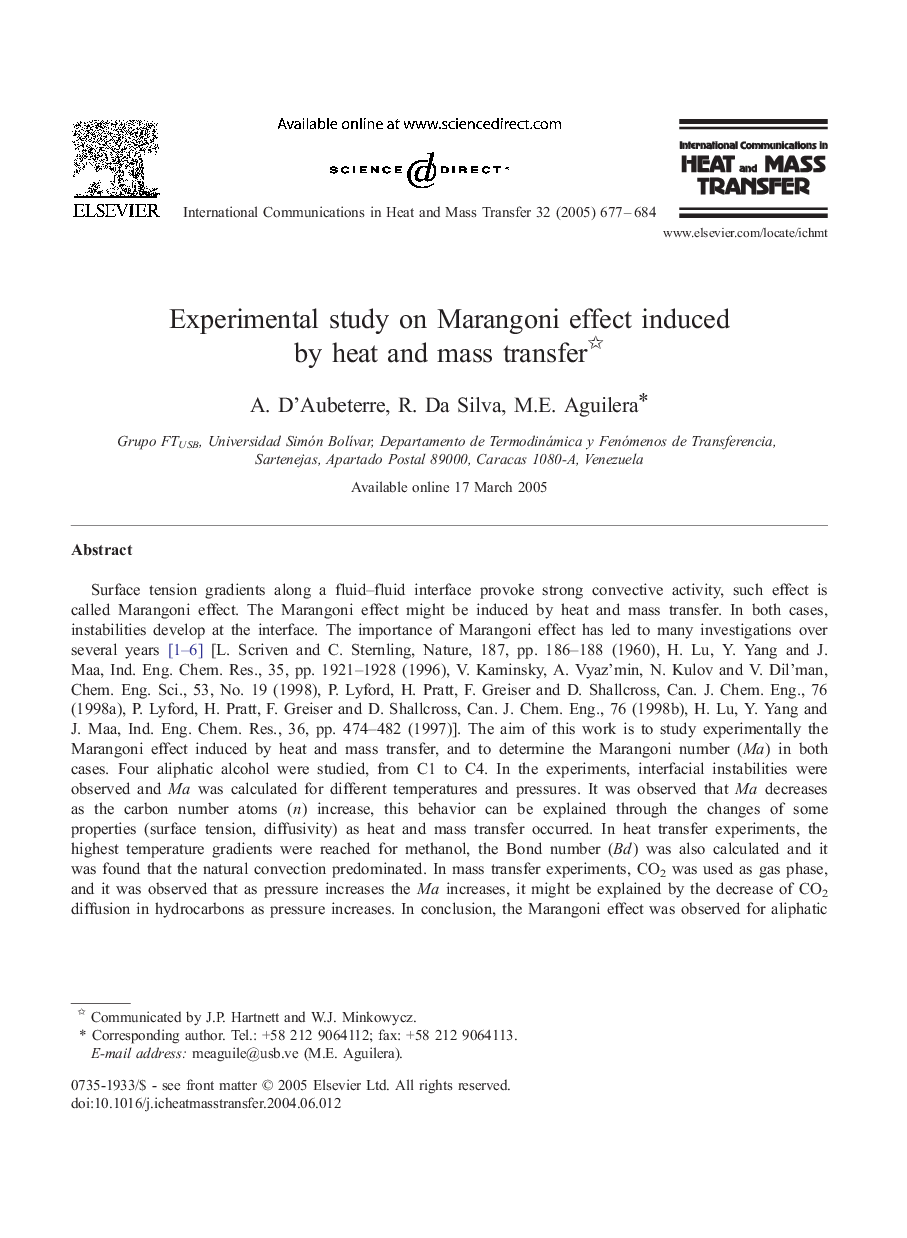| Article ID | Journal | Published Year | Pages | File Type |
|---|---|---|---|---|
| 10392446 | International Communications in Heat and Mass Transfer | 2005 | 8 Pages |
Abstract
Surface tension gradients along a fluid-fluid interface provoke strong convective activity, such effect is called Marangoni effect. The Marangoni effect might be induced by heat and mass transfer. In both cases, instabilities develop at the interface. The importance of Marangoni effect has led to many investigations over several years [1], [2], [3], [4], [5], [6] [L. Scriven and C. Sternling, Nature, 187, pp. 186-188 (1960), H. Lu, Y. Yang and J. Maa, Ind. Eng. Chem. Res., 35, pp. 1921-1928 (1996), V. Kaminsky, A. Vyaz'min, N. Kulov and V. Dil'man, Chem. Eng. Sci., 53, No. 19 (1998), P. Lyford, H. Pratt, F. Greiser and D. Shallcross, Can. J. Chem. Eng., 76 (1998a), P. Lyford, H. Pratt, F. Greiser and D. Shallcross, Can. J. Chem. Eng., 76 (1998b), H. Lu, Y. Yang and J. Maa, Ind. Eng. Chem. Res., 36, pp. 474-482 (1997)]. The aim of this work is to study experimentally the Marangoni effect induced by heat and mass transfer, and to determine the Marangoni number (Ma) in both cases. Four aliphatic alcohol were studied, from C1 to C4. In the experiments, interfacial instabilities were observed and Ma was calculated for different temperatures and pressures. It was observed that Ma decreases as the carbon number atoms (n) increase, this behavior can be explained through the changes of some properties (surface tension, diffusivity) as heat and mass transfer occurred. In heat transfer experiments, the highest temperature gradients were reached for methanol, the Bond number (Bd) was also calculated and it was found that the natural convection predominated. In mass transfer experiments, CO2 was used as gas phase, and it was observed that as pressure increases the Ma increases, it might be explained by the decrease of CO2 diffusion in hydrocarbons as pressure increases. In conclusion, the Marangoni effect was observed for aliphatic alcohol, the influence of temperature and pressure was also observed, and finally, the Marangoni number decreases as n increases.
Related Topics
Physical Sciences and Engineering
Chemical Engineering
Fluid Flow and Transfer Processes
Authors
A. D'Aubeterre, R. Da Silva, M.E. Aguilera,
